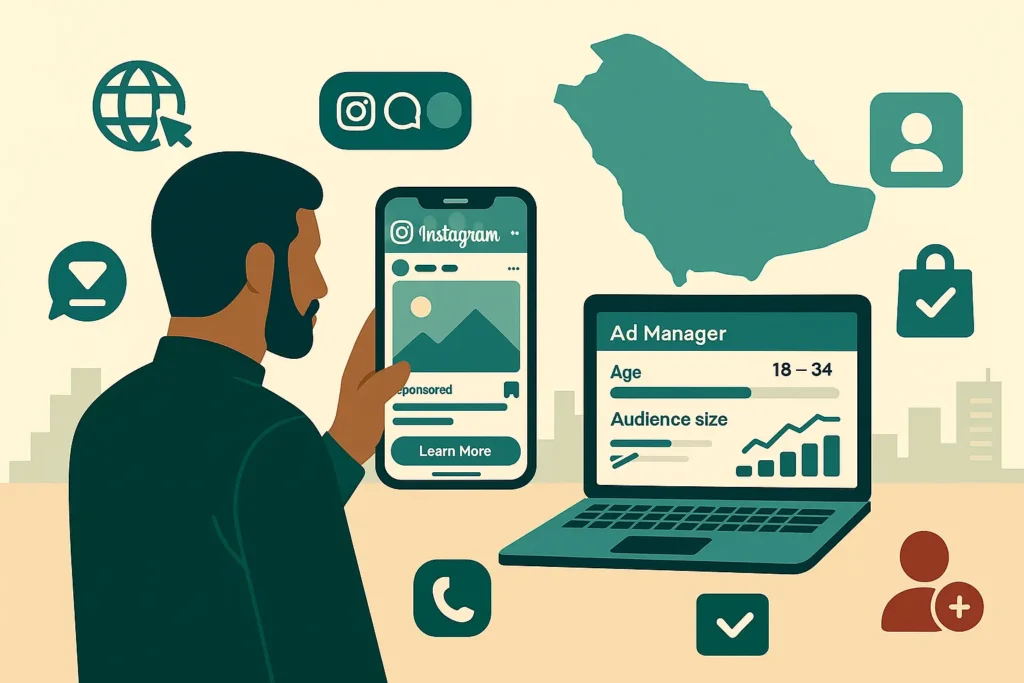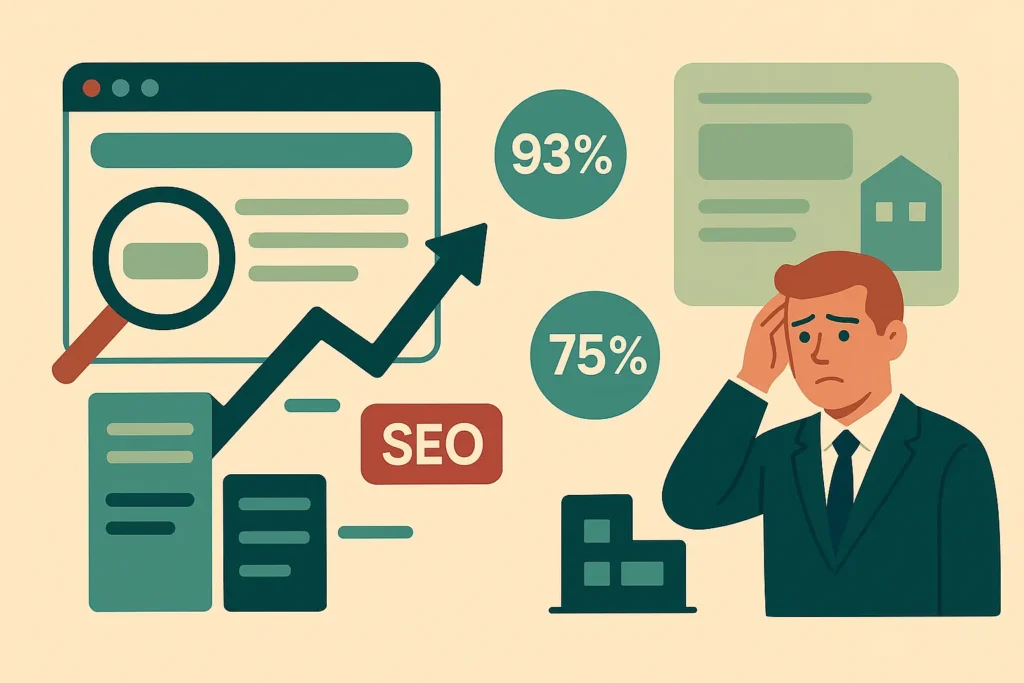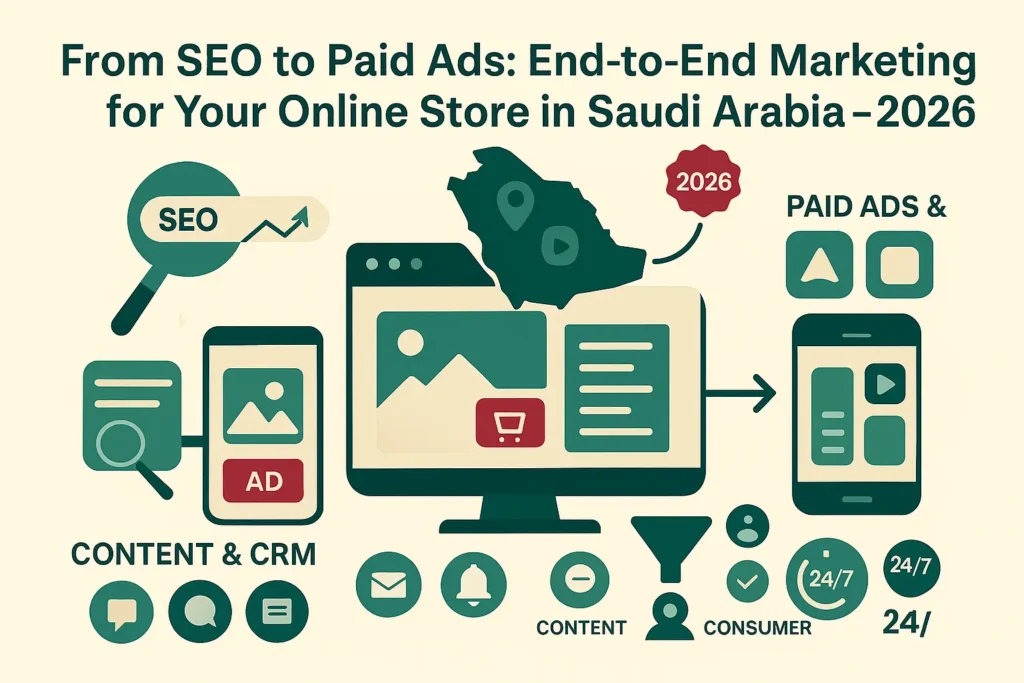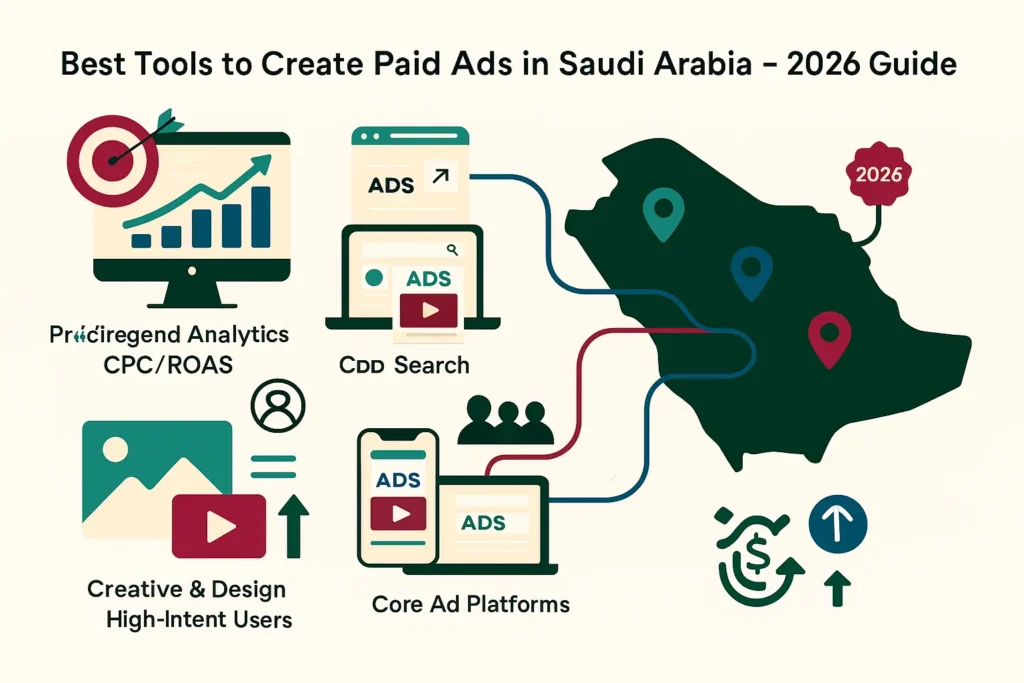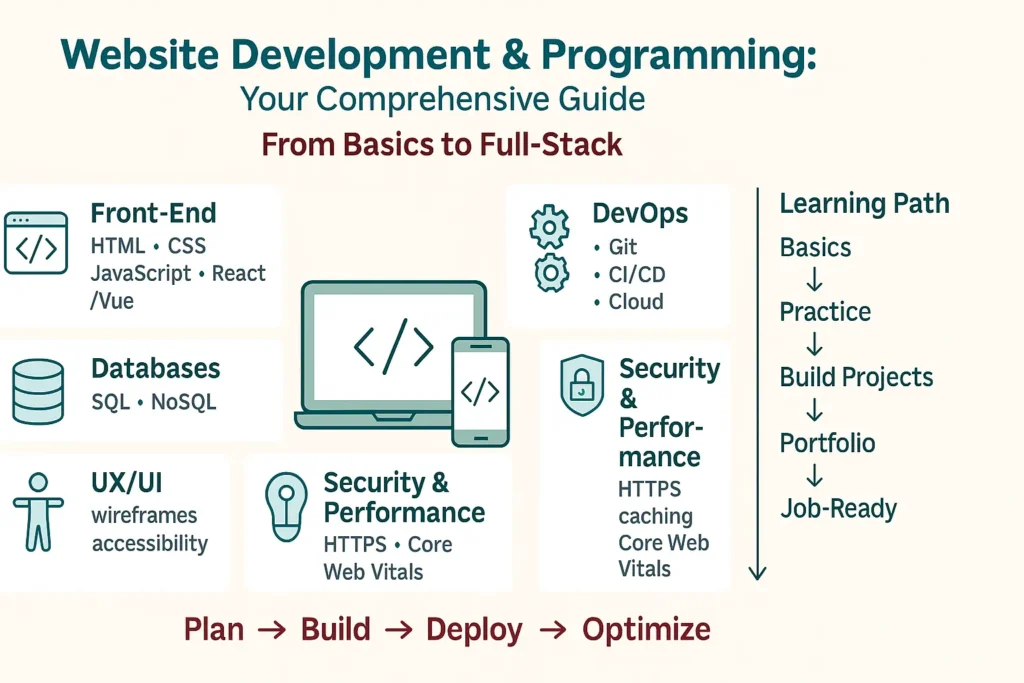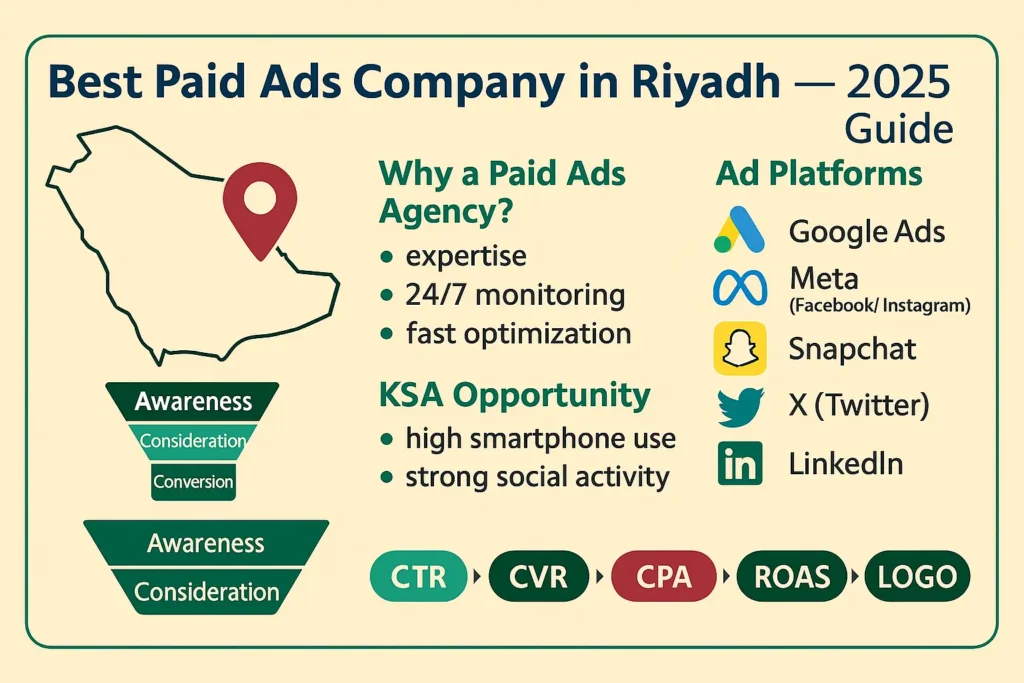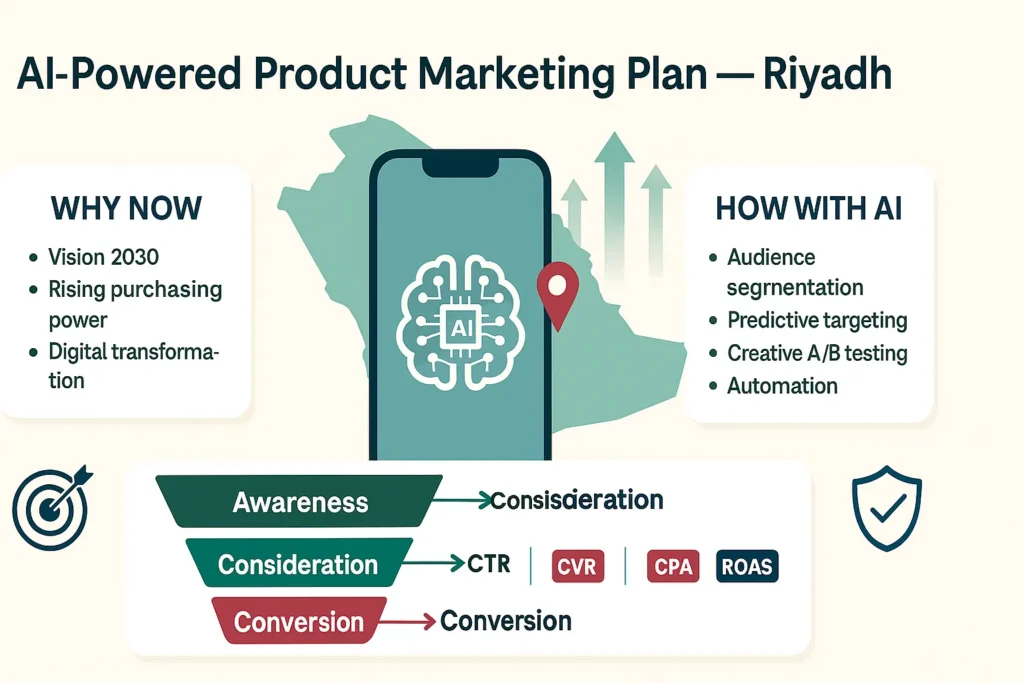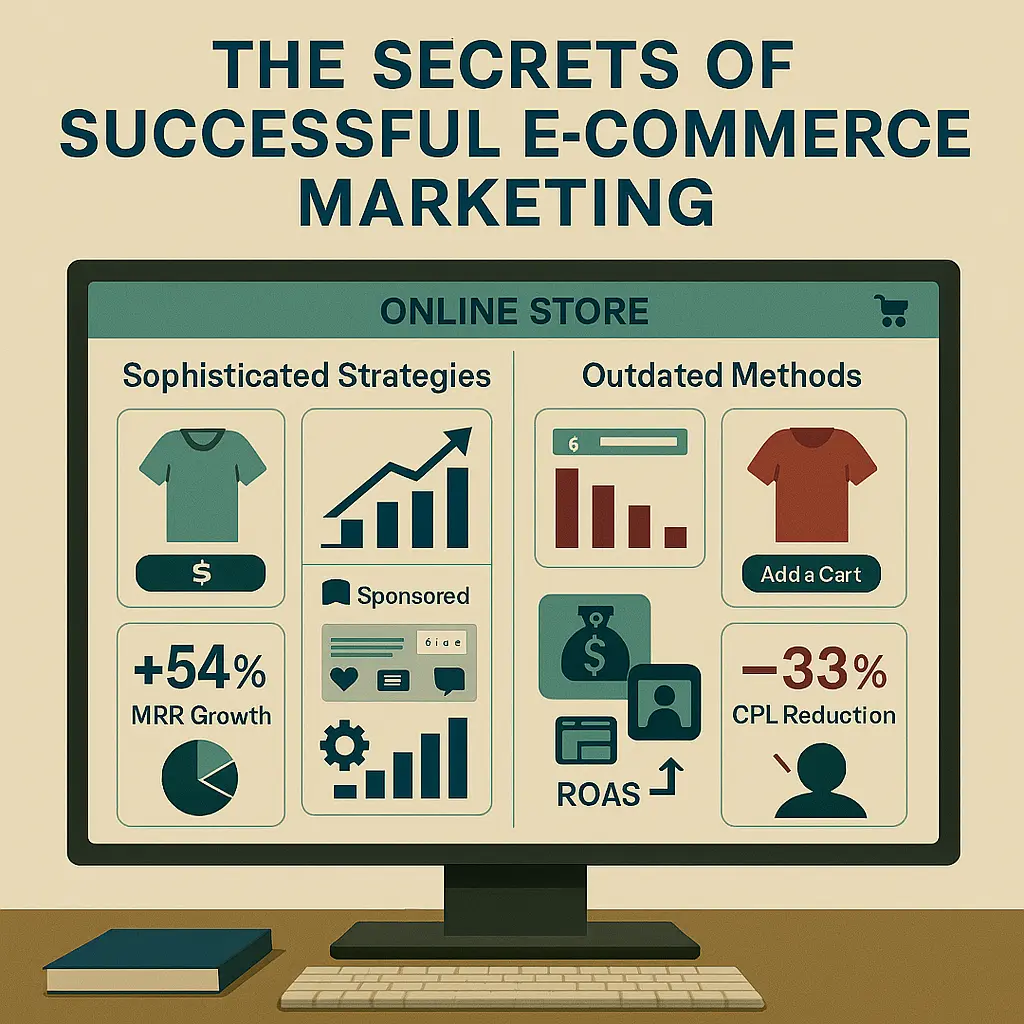
Secrets of Successful E-Commerce Marketing: What Your Competitors Are Doing That You Don’t Know?
E-Commerce Marketing: The Hidden World of Excellence
You see their ads everywhere. Their products dominate social media feeds. Their customers seem endlessly loyal. But what you don’t see is the sophisticated machinery running behind the scenes of your most successful competitors’ E-Commerce Marketing operations.
While you’re focused on basic tactics like posting product photos and sending weekly newsletters, your competitors are leveraging advanced psychological triggers, sophisticated automation sequences, and data-driven strategies that create unfair market advantages. They’ve moved beyond obvious marketing methods to implement systems that systematically outperform standard approaches.
The difference between successful e-commerce brands and struggling ones isn’t just budget—it’s the depth of strategic thinking behind every customer touchpoint.
The cost of not understanding these hidden strategies compounds daily. Every customer who chooses a competitor, every abandoned cart that doesn’t convert, and every marketing dollar that doesn’t deliver optimal returns represents missed opportunities that your competition has already figured out how to capture.
Uncovering Your Competitors’ Real Marketing Strategies
Your competitors won’t hand over their playbooks, but they are constantly revealing their strategies if you know where to look and how to interpret what you’re seeing.
Start by identifying three types of competitors: direct competitors selling similar products, aspirational brands you want to emulate, and companies targeting your ideal customers with different products. Each provides unique insights into different aspects of successful E-Commerce Marketing.
Tools like SEMrush and Ahrefs reveal which keywords your competitors are bidding on and ranking for organically. But the real intelligence comes from tracking their testing patterns over time. When you notice a competitor running the same ad creative for three months, that’s not laziness—that’s confirmation the creative is converting profitably.
Use Facebook Ad Library and Google’s Ad Transparency Center to monitor competitor advertising patterns. Screenshot their ads weekly and note changes in messaging, offers, and targeting. Successful companies constantly test, but they scale what works consistently.
Monitor their email marketing by subscribing to competitor lists with different personas. Create fake personas representing different customer segments to see how they tailor messaging. Notice the timing, frequency, and sequence of their automated campaigns.
Social media provides another window into competitor strategies. Track which posts receive the highest engagement, what user-generated content they amplify, and how they respond to customer service issues publicly. Their most successful content often gets repurposed across multiple channels.
Social Media Secrets That Drive Real Revenue
While you’re posting product photos with basic captions, your smartest competitors are implementing sophisticated social media strategies that generate measurable revenue, not just engagement metrics.
They’re using advanced audience targeting that goes far beyond demographics. They create custom audiences based on website behavior, then create lookalike audiences from their highest-value customers. They segment these audiences further, serving different creatives to people who viewed specific product categories versus those who abandoned carts.
E-Commerce Marketing leaders understand that social media algorithms reward consistent engagement over time. They’re not posting randomly—they’re analyzing when their specific audience is most active and engaging, then concentrating their efforts during those windows.
User-generated content represents one of their most powerful secret weapons. But they’re not just reposting customer photos. They’re creating systematic campaigns that encourage specific types of content creation, providing customers with hashtags, photo guidelines, and even product styling suggestions that align with their brand aesthetics.
The most successful brands build micro-influencer networks rather than relying on individual partnerships. They identify customers who are natural advocates, then provide them with exclusive access, early product releases, and personalized discount codes to share. This creates authentic promotion that feels organic to audiences.
Cross-platform synergy multiplies their reach efficiently. They create content specifically designed to work across Instagram, TikTok, and Facebook simultaneously, while customizing the presentation for each platform’s unique culture and algorithm preferences.
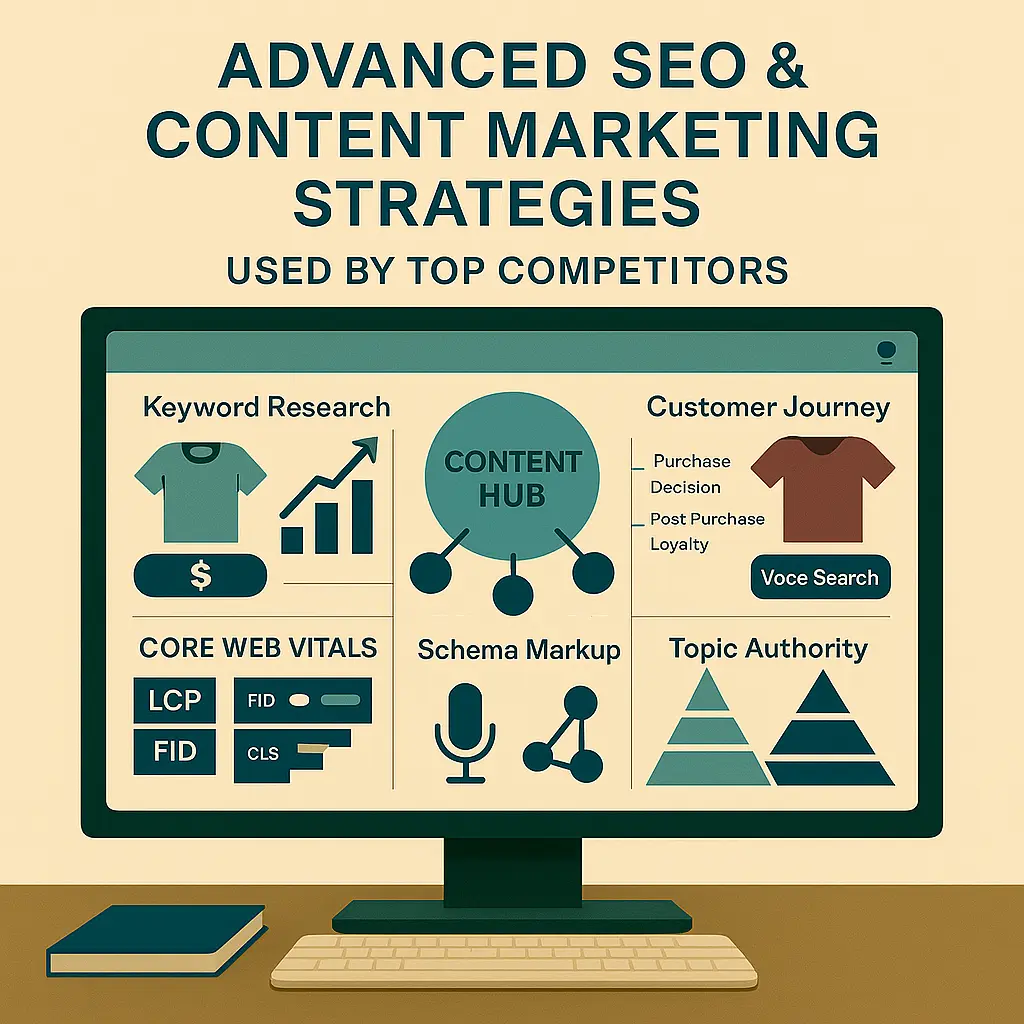
The Advanced SEO and Content Game Your Competitors Are Playing
Your competitors aren’t just optimizing for obvious product keywords. They’re conducting sophisticated keyword research that identifies the entire customer journey, from problem awareness to post-purchase loyalty.
They analyze search intent behind keywords to create content that matches exactly what searchers want to find. When someone searches for “best winter jacket,” they indicate whether they want to buy immediately, compare options, or learn about features—and content creators create content accordingly.
Content hub creation represents an advanced strategy you might not notice. They’re building comprehensive resource centers around topics adjacent to their products. A skincare brand might create an extensive hub about ingredient education, while a fitness equipment company builds content around workout routines and nutrition guidance.
Topic authority building happens systematically. They identify every related subtopic in their industry, then create authoritative content for each one. This isn’t random blogging—it’s strategic content mapping designed to capture search traffic at every stage of the buyer’s journey.
Technical SEO advantages often provide the competitive edge that’s invisible to casual observation. They optimize for Core Web Vitals, implement sophisticated schema markup, and ensure their sites load quickly across all devices. These technical improvements directly impact both search rankings and conversion rates.
Voice search optimization has become crucial as more customers use smart speakers and mobile voice search. Your competitors are optimizing for conversational queries and long-tail keywords that match how people speak.
Email Marketing Sophistication You’re Missing
While you’re sending the same newsletter to your entire list, your competitors are implementing behavioral segmentation that treats different customer types completely differently.
They segment audiences based on purchase history, website behavior, engagement levels, and predicted lifetime value. Someone who bought six months ago receives different messaging than someone who purchases monthly. Recent browsers get different content than loyal customers.
Advanced automation sequences extend far beyond basic welcome emails. They create complex workflows that respond to specific customer actions: different sequences for people who bought specific product categories, abandoned different cart values, or engaged with particular types of content.
Personalization extends beyond inserting first names. They use customer data to recommend products, customize send times for individual recipients, and adjust content based on previous purchase behavior and browsing history.
Cross-channel integration connects email marketing with social media, website personalization, and paid advertising. When someone clicks an email but doesn’t purchase, they might see retargeting ads featuring the same products, creating a coordinated experience across all touchpoints.
Retention email strategies focus on maximizing customer lifetime value rather than just promoting new products. They send educational content that helps customers get more value from previous purchases, create exclusive experiences for loyal customers, and implement win-back campaigns for inactive subscribers.
Pricing Psychology and Promotion Strategies That Convert
Your competitors aren’t setting prices randomly or matching competitor prices manually. They’re implementing dynamic pricing strategies that automatically adjust based on demand, inventory levels, competition, and customer behavior.
They monitor competitor pricing continuously but make strategic decisions about when to match, undercut, or premium price based on their positioning and customer psychology. Sometimes being slightly more expensive creates the perception of higher quality.
Bundle creation follows psychological principles that increase average order value systematically. They analyze which products are frequently bought together, then create bundles that feel like natural combinations while improving profit margins.
Scarcity and urgency tactics are implemented authentically rather than manipulatively. They use real inventory levels to create genuine scarcity, implement time-sensitive offers based on customer behavior, and create limited editions that feel exclusive rather than artificial.
Seasonal promotion calendars are planned months in advance, coordinated across all marketing channels, and timed to coincide with both industry patterns and their specific customer behavior data.
Loyalty program structures are designed to modify behavior systematically. They don’t just reward purchases—they reward specific actions that increase customer lifetime value, such as referrals, reviews, social sharing, and engaging with educational content.
Customer Experience Differentiators That Create Loyalty
The post-purchase experience often determines whether customers become one-time buyers or loyal advocates. Your competitors understand that the sale is just the beginning of the customer relationship.
They optimize every touchpoint after purchase: confirmation emails that build excitement, shipping notifications that maintain engagement, packaging that creates unboxing experiences worth sharing, and follow-up communications that ensure satisfaction.
Customer service automation feels personal because it’s based on sophisticated customer data and behavioral triggers. They know which customers typically need support, what questions are most common for specific products, and how to proactively address concerns before they become problems.
Return and refund policies are strategically designed to reduce friction and build confidence. They understand that generous return policies often increase initial purchases more than they increase actual returns, creating a net positive effect on revenue.
Community building extends beyond social media to create genuine connections between customers and the brand. They facilitate user groups, create exclusive experiences for loyal customers, and build platforms where customers can share knowledge and experiences.
Brand advocacy programs systematically turn customers into promoters. They identify natural advocates, provide them with tools and incentives to share their experiences, and create exclusive access that makes advocacy feel rewarding rather than forced.
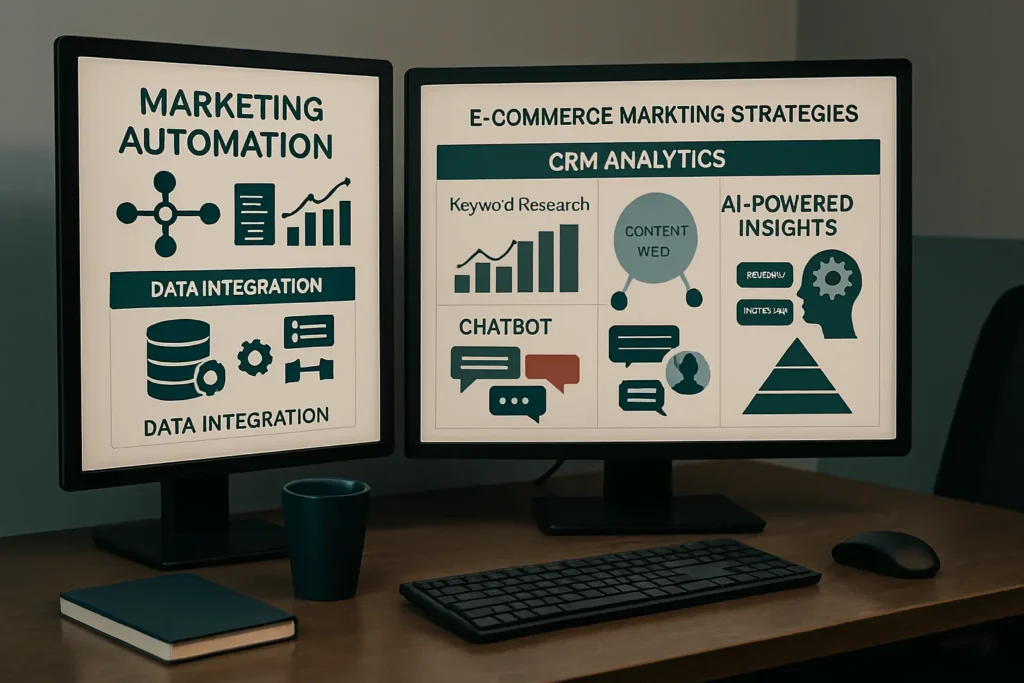
Technology Stack and Automation Advantages
Behind every successful E-Commerce Marketing operation runs a sophisticated technology stack that automates routine tasks and provides insights impossible to gather manually.
Marketing automation workflows handle complex customer journeys that would be impossible to manage manually. They trigger different responses based on customer behavior, coordinate campaigns across multiple channels, and optimize send times and content for individual recipients.
Customer Relationship Management integration unifies all customer data, providing a complete view of each customer’s history, preferences, and predicted future behavior. This enables personalization at scale and ensures consistent experiences across all touchpoints.
Chatbot and artificial intelligence implementation provide immediate customer support while gathering data about common questions and concerns. Advanced implementations can handle complex inquiries and seamlessly transfer to human agents when necessary.
Analytics setup reveals actionable insights rather than just reporting metrics. They track customer lifetime value, attribution across multiple touchpoints, and predictive indicators that help them optimize campaigns before problems develop.
Integration strategies create seamless customer journeys by connecting all systems and ensuring data flows smoothly between platforms. This prevents the fragmented experiences that frustrate customers and reduces internal operational complexity.
Strategic Partnerships and Collaboration Secrets
Your most successful competitors rarely build everything in-house. They create strategic partnerships that expand their reach, enhance their offerings, and accelerate their growth.
Affiliate program structures are designed to attract quality partners rather than just maximizing participant numbers. They provide partners with excellent tools, fair compensation, and ongoing support that make promotion easy and profitable.
Brand partnership strategies identify complementary companies that serve similar customers without direct competition. These partnerships can include content collaboration, cross-promotion, bundled offerings, and shared experiences that benefit all participants.
Influencer relationship management extends far beyond one-off campaigns to build long-term relationships with creators who become genuine brand advocates. They invest in ongoing relationships rather than constantly seeking new partnerships.
Cross-promotional opportunities with complementary brands create win-win situations that expand market reach without increasing competition. They identify brands whose customers might be interested in their products and create collaborative campaigns.
Distribution partnerships enable market expansion without the costs and complexity of building new channels independently. They identify partners whose distribution channels provide access to their target customers.
Data Mastery and Analytics That Drive Decisions
Data-driven E-Commerce Marketing requires more than just collecting information—it demands systematic analysis and actionable insights that guide strategic decisions.
Customer data collection strategies respect privacy while gathering the information needed to provide personalized experiences. They communicate data usage, provide value in exchange for information, and use collected data to genuinely improve customer experiences.
Predictive analytics implementation enables them to forecast demand, identify customers likely to churn. Predict which products individual customers are most likely to purchase, and optimize inventory levels to prevent stockouts and overstock situations.
Attribution modeling reveals which marketing channels and campaigns drive conversions rather than just initial clicks. This understanding enables more effective budget allocation and campaign optimization.
Customer lifetime value optimization focuses marketing efforts on acquiring and retaining customers who will provide the highest long-term value rather than just immediate revenue.
Cohort analysis tracks customer behavior over time, revealing trends that aren’t apparent in aggregate data. This understanding helps them identify what drives long-term loyalty and what causes customers to churn.
Keep reading and uncover secrets that can change the way you work. How Search Engine Optimization SEO Doubles Your Online Store’s Profits in Saudi Arabia
Reverse Engineering Success Into Your Strategy
Understanding competitor strategies is valuable, but the real competitive advantage comes from systematically implementing and testing these strategies in ways that align with your unique brand and customer base.
Create a competitive intelligence framework that monitors competitor activities consistently rather than sporadically. Set up automated alerts for competitor changes, schedule regular analysis sessions. And maintain organized records of competitor strategies and their apparent results.
Prioritize implementation based on your current capabilities and customer needs. Don’t try to implement everything simultaneously—choose strategies that build on your existing strengths and address your most significant customer experience gaps.
Adapt competitor strategies to your unique brand rather than copying them exactly. Understand the underlying principles behind successful tactics. Then implement them in ways that feel authentic to your brand and resonate with your specific audience.
Test and measure every implementation rigorously. What works for competitors might not work identically for you due to different audience segments, brand positioning, or market conditions. Systematic testing ensures you optimize strategies for your specific situation.
Build sustainable competitive advantages by combining multiple insights rather than relying on individual tactics. The most successful companies create systems where multiple strategies work together to create experiences that are difficult for competitors to replicate.
Keep reading and uncover secrets that can change the way you work. Top Search Engine Marketing Solutions for Businesses in Riyadh – AI-Driven Campaigns
Turning Intelligence Into Unstoppable Growth
The goal of competitive intelligence isn’t to become a copy of your competitors. It’s to understand what’s possible and build something uniquely powerful for your specific market position.
Combine multiple competitive insights to create comprehensive strategies that address every aspect of the customer journey. Individual tactics are less powerful than coordinated systems that work together to create superior customer experiences.
Build a culture of continuous learning where competitive analysis becomes an ongoing part of your strategic planning rather than a one-time research project. Markets evolve constantly, and sustainable competitive advantage requires continuous adaptation.
Stay ahead of competitors who are also learning by focusing on innovation rather than just imitation. Use competitive intelligence to understand what’s working now, but invest in developing capabilities and strategies that will create future advantages.
Create your secrets that competitors will want to discover. The ultimate success comes from becoming the company that others study and attempt to emulate rather than always following others’ lead.
Turn your goals into real achievements with our tailored services – request the service now.
FAQ
How often should I analyze my competitors’ marketing strategies?
Monthly competitive reviews provide ongoing awareness of market changes. While quarterly deep dives enable comprehensive analysis of strategy effectiveness and emerging trends.
Is it ethical to use competitor intelligence in my marketing?
Using publicly available information for competitive analysis represents standard business practice. Focus on understanding strategies rather than copying creative assets or proprietary information.
Which competitors should I focus on analyzing?
Monitor direct competitors for tactical insights, aspirational brands for strategic inspiration. And companies targeting your ideal customers with different products for a broader market understanding.
How can I tell if a competitor’s strategy is working?
Look for consistency over time, increased advertising spend, and expanded campaign reach. And evidence of growth, such as new product launches or market expansion.
What’s the biggest mistake businesses make in competitive analysis?
Copying tactics without understanding the strategic reasoning behind them or considering how they fit within their unique brand context and customer base.
Your Competitive Advantage Starts Now
The strategies revealed here represent just the beginning of what’s possible when you move beyond surface-level marketing tactics to implement sophisticated E-Commerce Marketing systems.
Your competitors have invested time, money, and effort to develop these approaches. They’ve tested, refined, and optimized their strategies through experience and iteration. But now you have a roadmap to implement similar strategies more quickly and effectively.
The companies that dominate e-commerce markets don’t rely on luck or single breakthrough tactics. They build comprehensive systems that work together to create customer experiences that are both superior and difficult to replicate. They understand that sustainable competitive advantage comes from coordinating multiple strategies into cohesive customer journeys.
Your success depends not on implementing every strategy simultaneously, but on systematically building capabilities that compound over time. Start with strategies that address your biggest current challenges. Measure their effectiveness rigorously, and expand your capabilities based on proven results.
The competitive intelligence you’ve gained here provides the foundation for transformation, but implementation and optimization will determine your actual results. Your competitors will continue evolving their strategies. But now you have the framework to not just keep pace, but to innovate beyond what they’re currently doing.
